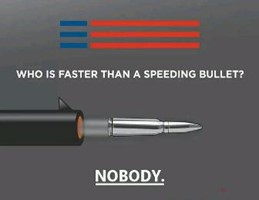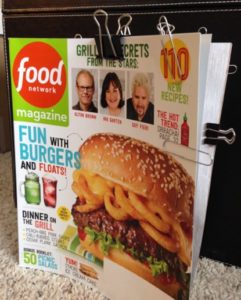By Ben Langlotz
|
March 3, 2021
|
Firearms
|
0 Comments
THE JOURNALIST’S GUIDE TO GUNS
(How Not to Look Like an Idiot
When Writing About Guns)
Journalists. Bless their hearts. As a rule of thumb, any time we read a news story about a subject or incident we already know a lot about, it turns out that about 25% of what’s reported is simply wrong.
This is why knowledgeable gun owners distrust many news stories involving guns: because too many “journalists” display an ignorance of firearms that would be laughable if it weren’t so appalling. If they can’t get their facts straight about gun technology and the facts about shooting, then we don’t trust them on much else.
Why I’m Writing This Guide
Nobody reading this newsletter needs my advice on basic gun tech, so maybe this is just a little self-indulgent writing. For over 24 years as a patent attorney, I’ve taken pride in my ability to explain stuff effectively. I tell my clients that a patent application isn’t just about communicating with an experienced patent attorney who specializes in a certain area of technology. It’s about communicating with ordinary jurors, who are first going to have to understand an invention and what makes it special, before they can award damages for infringement of your patent.
As an aside, my brother is a physician, and once told me how they buck up the spirits of med students who are worried about their bad grades. They console them:
Q: “You know what they call the guy who graduates at the bottom of his med school class?…”
A: “Doctor!”
My legal version is:
Q: “You know what they call the guy who graduates at the bottom of his law school class?”
A: “Your Honor!”
So I’m writing patent applications for these guys too, as they usually aren’t the technical types.)
In addition to writing for future juries and judges, I try to write at least the first page of any patent application to meet the “Mom” test: Would your intelligent but non-technical mother be able to read it, and have a fair idea about what’s so important about your invention (and doubtless feel proud of her inventive offspring)?
The best compliment I ever get from inventors about a draft of a patent application is “Wow! You really understand my invention!” So maybe if I’m good at making gun tech understandable, I might be the right guy
Do You Want It Clear or Accurate? You Can’t Truly Have It Both Ways.
“Truth and clarity are complementary.” — Danish Physicist and Nobel Prize Winner Niels Bohr
The guy who figured out the atom, was saying that the truer your explanation is, the less clear it will be. Journalists face this challenge in trying to make their stories readable, but without cutting too many corners with the facts. In this Guide, a 20 word explanation might be clear, but 2000 words would be needed to be perfectly correct (confusing many readers).
So I’m faced with explaining gun tech to journalists in a way that is clear (brief and pithy) and accurate (with enough details to satisfy the true experts and gun geeks reading this). So please forgive me for the small omissions and slight shading of details, in order to keep things clear, as I write for the typical new reporters out there:
Lesson #1
They’re “Cartridges,” Not Bullets
Bullets are little lumps of lead. Inert, harmless pieces of soft metal. They’re a component of ammunition, but they’re not ammunition.

Anti-gun activists show their ignorance.
What you journalists are almost always talking about when you mistakenly use the term “bullet” is “cartridge.”
Cartridges (or “rounds”) are little units of ammunition that go “bang” when they’re hit just right. The gunpowder burns, the bullet flies away, and the case stays behind with the gun.
Here are some correct(ed) usage examples:
“…a bill to limit magazine capacity to 10 bullets rounds…”
“…a bill to limit purchasers to no more than 50 bullets cartridges per day…”
“…bullets cartridges have been recovered as far as a mile from the rifle range…”
One classic example of how this issue can confuse the ignorant is the case when a neighbor objecting to a gun range nearby “salted” her home’s roof gutters with a few “bullets” to make it appear that they were unsafely escaping the disputed range.
She foolishly had tossed live cartridges onto the roof to roll into the gutters, and the responding deputy Sheriff rolled his eyes, knowing the guns don’t expel live rounds of ammunition.
Michael Bloomberg’s well-funded anti-gun “Every Town for Gun Safety” group created a laughable propaganda image showing a rifle cartridge shooting out of the muzzle of a gun barrel.
Lesson #2
They’re “Magazines,” Not Clips
When you journalists write about “clips” you’re always wrong. Always.

Pez: A Candy Magazine?
Magazines are containers that hold a bunch of cartridges, and are inserted into a gun to load it all at once, making reloading quick. A magazine itself is just a little sheet metal or plastic box (much like a Pez dispenser), and presents no danger of any kind. For pistols, they’re contained entirely in the grip, and for rifles, they usually stick out below the bottom, in front of the trigger.
If you’re curious, “clips” are archaic devices known only to gun enthusiasts, and are essentially never used by modern police or military, or by people who use guns for self-defense or sport. They’re used with old-style military rifles (like the WWII “Garand” they carried in Saving Private Ryan).

A magazine with clips
If you must know, they’re for loading rifles that don’t take magazines. They’re little strips of metal that hold a set of cartridges by their rear ends so they can be shoved into the rifle all at once. But they never come up in the news, so you can simply delete the word from your journalist dictionary.
I can assure you that over the years in the gun industry, I’ve never heard anyone use “clip” as slang for magazine. Maybe Hollywood gangsters and anti-gun reporters still do, but no one else does.
Incidentally, worrying about large magazines giving criminals firepower is pretty silly, because the whole point of magazines is how quick and easy it is to change them. I’ve seen live demos in which a shooter changed pistol magazines so fast it was less than a second’s interruption between shots. And rifle magazines can be changed almost as fast with a little practice.
So, if you’re writing a story that involves magazines and are still confused, my advice is to drop by any gun shop and tell the guy behind the counter that you’re a journalist working on a story, and would like to see how magazines work. Trust me, you’ll learn all you need to know.
Lesson #3
Calibrating Your “Caliber”
This one confused me back when I started learning about guns. All you need to know is that caliber usually refers to the diameter of the bullet (and of the barrel of the gun that fires it).
The cartridge designation will give you a good idea of the caliber, but can lead to confusion. 357 Magnum has a 0.357 inch diameter bullet. But so does a 38 special. A kid’s 22 squirrel rifle has the same bullet diameter as the M16 military rifle but they’re otherwise different in almost every other respect.
Oh, and there is no such thing as a “high caliber” anything. Those are meaningless words used by anti-gun writers to make some gun sound fearsome. Same for “high power.” That M16 and the AR-15 fire the same round, but they’re anything but high powered. The cartridge they fire is considered borderline weak and inhumane for a thin skinned little deer, and is actually less powerful than just about every other cartridge used by ordinary hunters. Those 22 caliber bullets are a much smaller caliber than 30 caliber (0.300 inch diameter) hunting bullets. They’re much smaller than the .50 caliber (half inch) bullets used in hotdog-sized cartridges that cost $5 a pop, and are used on those big belt-fed machine guns on aircraft and by wealthy target shooters (who Dianne Feinstein worries are practicing to shoot through her armored limousine).
Lessons #4-11
Random Thoughts You Need to Know About Guns
#4. Guns aren’t required to be “registered” in most jurisdictions. Please don’t write that a gun was “unregistered” if there is no law requiring it to be. To those of us who know (there are lots of us) an “unregistered gun” sounds as absurd as an “unregistered baseball bat.”
#5. No self-respecting gun owner uses the phrase “packing heat.” It’s called “carrying”, whether concealed or open. “Packing heat” is old-time gangster slang with biased connotations. Avoid it unless you’re writing an anti-gun op-ed.
#6. Machine guns are legal (under federal law, and in most states). To buy one, a person must pay a $200 tax, undergo a background check, and wait a year or more for the paperwork to process. But only specially registered ones may be bought and sold by people. These are all older than 1986 and there are so few that what should cost $1000 new in a free market costs $10,000 or more. That means that they’re only for wealthy collectors, which explains why they aren’t used in crimes. Ever.
#7. Silencers are legal in most states. They’re properly called “suppressors” and we also use the slang term “can.” “Silencer” is OK to write, but it bothers a few gun geeks because they don’t make a gun silent (maybe as annoyingly loud as an air nailer – not the “pfffht” or “ptew” of Hollywood movies). In Hollywood, only bad guys use them. In reality, it’s only good guys who passed a background check and paid a $200 tax just to make their gun is a little easier on everyone’s ears.
#8. Sinister gun collections. When you’re reporting on some backwoods kook who was raided by a SWAT team, remember that all those guns and ammo you’re breathlessly reporting on are probably perfectly legal. It’s quite normal for upstanding gun enthusiasts and hunters to own dozens of firearms (or to wish they did). It deceives your readers and amuses gun enthusiasts when we read that “the arsenal included over 1000 rounds of ammunition.” That’s because when we spend a weekend taking a shooting course, or just out having fun shooting at targets, we can easily shoot 1000 rounds (no it’s not a cheap hobby). 5000 rounds might sound like a lot, but that much 22 ammo can easily be hand carried in a shoe box by a strong boy.
Also, a personal gun and ammo collection isn’t an “arsenal” unless you’re trying to demonize the owner, and strike fear in the hearts of your readers. It’s an “ample collection,” and for most gun owners, never ample enough.
#9. Ammunition in a burning building is no danger to firefighters. Mythbusters did this one. When the powder burns, the case just pops off the bullet. Firefighters with heavy suits and eye protection are in no danger. An excellent YouTube video by the NSSF titled “Sporting Ammunition and the Fire Fighter” shows how surprisingly safe ammunition is in a fire and when subject to other extreme stresses.
#10. An “assault rifle” is a military rifle that can shoot full auto. “Semi-automatic” means that a single shot is fired for each trigger pull, and the gun automatically loads the next round. Most pistols carried by police officers are semi-automatic.
An “assault weapon” is a term made up by people trying to ban semiautomatic rifles, by falsely implying that they are assault rifles.
“Modern Sporting Rifle” is the industry standard term for the popular AR-15 and similar rifles with a military appearance. I prefer “Sport Utility Rifle.”
#11. The NRA isn’t the “gun industry lobby.” They may have millions of individual members whose interests they represent when lobbying lawmakers and pursuing civil rights lawsuits. But the real “gun lobby” is the National Shooting Sports Foundation (NSSF) that represents all the gun companies (I filed a bunch of their trademarks at no charge to support the industry). The NSSF has the mission: “To promote, protect and preserve hunting and the shooting sports.”
That’s about all a journalist who’s seeking to report the facts clearly and accurately needs to know about guns. If they’re looking to “change the world,” then my hands are tied.
So let me know if you have any thoughts about what should be added to this list. Maybe we need an official guide on the politics of guns as well as technology, huh? Let me know what basics you think journalists need to know.